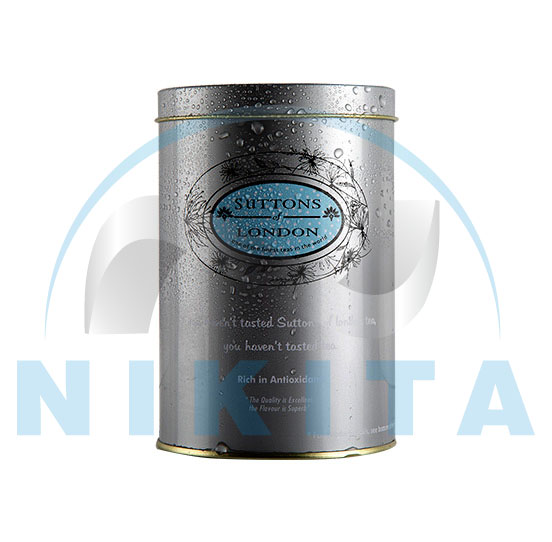
Sustainability is becoming a priority for both consumers and businesses. As concerns about pollution, waste, and environmental impact grow, industries are shifting towards eco-friendly packaging solutions. Metal food packaging containers stand out as a sustainable alternative to plastic and other materials, offering recyclability, durability, and reduced environmental footprint.
This blog explores the environmental impact of metal food packaging containers and how their recyclability makes them a responsible choice for food storage.
The Problem with Conventional Packaging
Traditional packaging materials, especially plastic, have led to severe environmental consequences, including:
- Plastic Pollution – Millions of tons of plastic waste end up in landfills and oceans, harming wildlife and ecosystems.
- High Carbon Footprint – The production and disposal of plastic and glass require significant energy and resources.
- Limited Recycling Capabilities – Unlike metal, plastic degrades with each recycling cycle, eventually becoming non-recyclable.
Consumers and businesses are now seeking sustainable alternatives, and metal food packaging containers are emerging as a leading solution.
The Environmental Advantages of Metal Food Packaging Containers
1. 100% Recyclability Without Quality Loss
One of the biggest advantages of metal food packaging containers is that they are infinitely recyclable. Unlike plastic, which loses quality after multiple recycling cycles, metal retains its strength and functionality no matter how many times it is processed.
2. Energy Efficiency in Recycling
Recycling metal requires significantly less energy than producing new metal from raw materials. For example:
- Recycling aluminum saves up to 95% of the energy needed to produce new aluminum.
- Steel recycling reduces energy consumption by 60-70% compared to virgin steel production.
This means that every time a metal food packaging container is recycled, it helps conserve natural resources and reduce greenhouse gas emissions.
3. Reduction of Plastic Waste and Pollution
Plastic packaging contributes to landfill overflow and ocean pollution. Unlike plastic, which takes hundreds of years to degrade, metal packaging:
- Breaks down naturally over time if discarded improperly.
- Does not release microplastics into the environment.
- Can be reused or repurposed before being recycled.
By choosing metal food packaging containers, businesses and consumers can actively contribute to reducing plastic waste.
4. Lower Carbon Footprint Compared to Other Materials
When considering the environmental impact of packaging materials, metal has a lower overall carbon footprint than both plastic and glass. This is due to:
- Efficient recycling processes that require less energy.
- Lightweight aluminum reducing transportation emissions.
- Long lifespan and reusability reducing the need for constant production.
As businesses move towards net-zero emissions goals, switching to metal food packaging containers is a strategic way to lower their environmental impact.
The Lifecycle of Metal Food Packaging Containers
1. Production and Raw Materials
Metal food packaging containers are primarily made from aluminum or steel. While mining raw metal ores does have an environmental impact, the high recyclability rate of metal significantly offsets this initial footprint.
2. Usage and Reusability
Unlike single-use plastic packaging, metal food packaging containers are often reused multiple times before being discarded. Consumers repurpose metal cans for storage, DIY projects, or household use, extending their lifespan.
3. Recycling and Repurposing
Metal is one of the most efficiently recycled materials in the world. Once collected, metal food packaging containers go through the following recycling process:
- Sorting – Metal containers are separated from other waste.
- Melting – The metal is melted down at high temperatures.
- Reformation – The melted metal is shaped into new containers or other products.
- Reintroduction to the Market – Recycled metal is used for new food packaging, reducing the need for virgin materials.
This closed-loop system ensures that metal continues to be reused without ending up in landfills.
Metal vs. Other Packaging Materials: Sustainability Comparison
| Feature | Plastic Packaging | Glass Packaging | Metal Food Packaging Containers |
|---|---|---|---|
| Recyclability | ❌ Limited cycles before degradation | ✅ Recyclable but energy-intensive | ✅ Infinitely recyclable without quality loss |
| Carbon Footprint | ❌ High emissions from production and disposal | ❌ Heavy weight increases transport emissions | ✅ Lower emissions due to efficient recycling |
| Waste Reduction | ❌ Major contributor to landfill and ocean pollution | ❌ Fragile and prone to breakage | ✅ Durable, reusable, and repurposable |
| Decomposition Time | ❌ 400+ years (breaks into microplastics) | ❌ 1 million years | ✅ Can break down naturally over time |
The Role of Businesses in Promoting Metal Food Packaging Containers
Companies in the food industry play a critical role in driving sustainable packaging initiatives. By switching to metal food packaging containers, businesses can:
- Enhance Brand Reputation – Sustainability-conscious consumers prefer brands that use eco-friendly packaging.
- Reduce Environmental Impact – Lower carbon footprints and waste production.
- Encourage Consumer Recycling – Educating customers about metal recyclability fosters responsible waste disposal.
Brands that prioritize sustainability by using metal packaging gain a competitive advantage and contribute to a cleaner planet.
The Future of Sustainable Food Packaging
With growing awareness of environmental issues, the demand for sustainable packaging will continue to rise. Key trends in metal food packaging containers include:
- Increased Use of Recycled Metals – Boosting sustainability efforts.
- Innovative Lightweight Designs – Reducing material use while maintaining durability.
- Biodegradable and Eco-Friendly Coatings – Enhancing recyclability and reducing chemical waste.
As technology advances, metal packaging will become even more eco-friendly, making it a long-term solution for sustainable food storage.
Conclusion
Metal food packaging containers offer one of the most environmentally responsible solutions for food storage. Their infinite recyclability, durability, and reduced carbon footprint make them a superior alternative to plastic and glass. By choosing metal packaging, businesses and consumers can actively contribute to a more sustainable future while ensuring food remains fresh and protected.
The shift towards metal packaging is more than just a trend—it’s a necessary step toward reducing waste and protecting the planet for future generations.




Leave a Reply